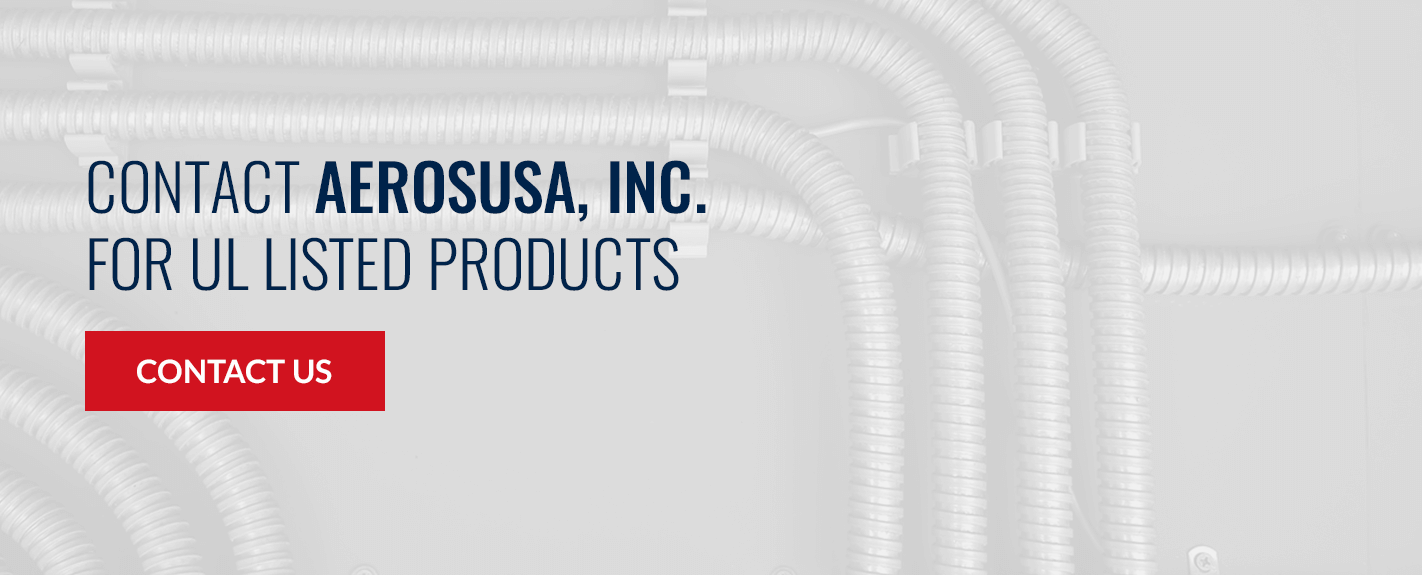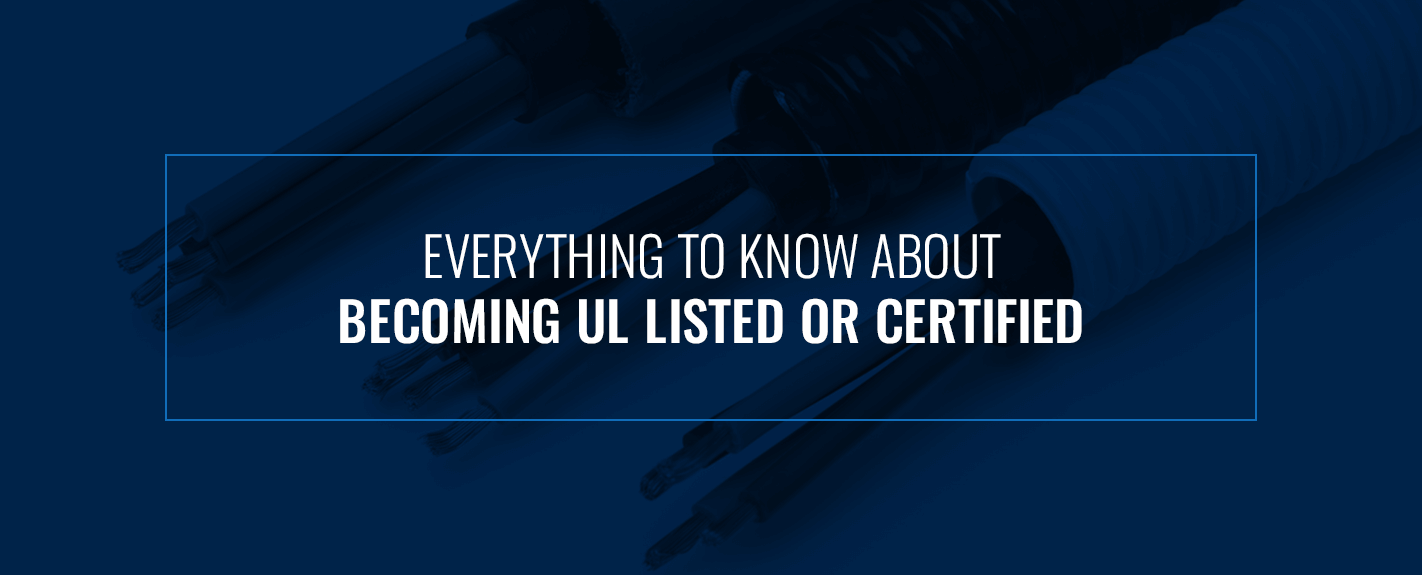
*Note we are not UL experts and cannot determine if your products are UL Listed or how to get them UL Listed. This article is purely for informational purposes only.
Many consumers feel a sense of reassurance when they see that a product has a certification mark from a respected source. However, few know what the information on these marks actually represent, and many brands are unsure whether they need these credentials. If you are unsure whether the product your company is manufacturing should pursue UL certification, you are not alone.
UL refers to Underwriters Laboratories, which is a third-party testing, inspection and certification company. There is no overall UL credential. Instead, products can bear marks like UL certified, Listed, Recognized Component, Classified or Performance verified. Though the tiers share some similarities, there are key distinctions. Understanding these differences is crucial in determining which is the best avenue for a business. Listing your products may be right for your brand.
For many brands, it’s important to understand UL certification, what these marks mean and the advantages they can offer. Though certifying products can be costly, the safety of consumers and staff should always be prioritized. Safety can help ensure brand loyalty and can be a key factor in your brand’s long-term success.
What requires a UL Certification? Though not every product needs to be UL Certified, there are several reasons to list your products. Below, we explore some of the differences between the various terms and credentials to help you determine the right next steps.
Table of Contents
What Does UL Listed Mean?
The UL Listed Mark is a tier of UL approval for stand-alone consumables that have undergone rigorous testing by Underwriters Laboratories. UL Listed means the product:
- Meets nationally recognized standards for sustainability and safety.
- Is free from reasonably foreseeable risks of electric shock or fire in a Division 2 environment with ignitable concentrations.
A UL listed product helps objectively verify the safety of many consumer items under normal wear and tear that comes with everyday use. This peace of mind is an advantage for the consumer, as they can be confident in the safety of their product, and the manufacturer because the UL Listed Mark improves your brand image and accountability.
The UL Listed logo and safety standards are recognizable to consumers. The logo is commonly found on everyday household items since it’s used for consumer-ready products on the market. This mark features a “UL” inside of a black circle. This UL listing mark is most often seen on:
- Heaters
- Furnaces
- Life jackets
- Smoke detectors
- Sprinkler systems
- Electrical appliances
- Bullet-resistant glass
- Computer equipment
- Carbon monoxide detectors
Compared to a UL Recognized Component Mark, UL Listed status is more difficult to attain because more testing is involved in the approval process. In addition, UL Recognized Component credentials specifically apply to parts, whereas UL Listed is the standard for stand-alone consumer products.
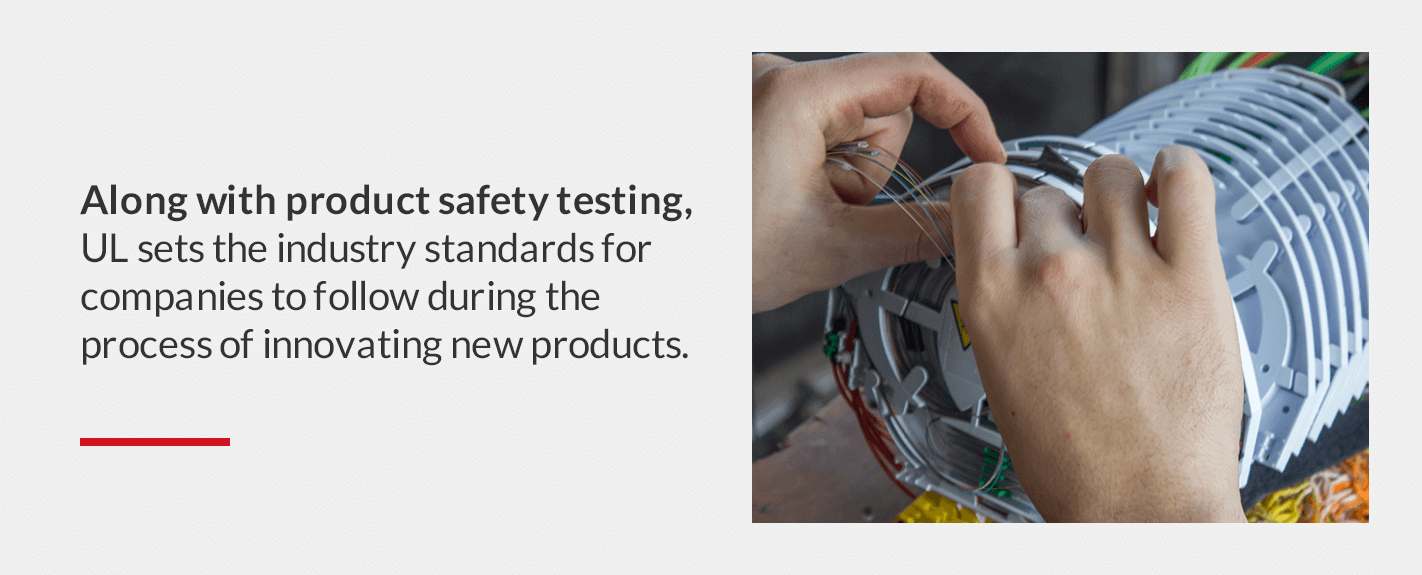
What Is UL Certification?
UL Certification is the broad term for the various safety certifications offered by Underwriters Laboratories (UL). UL is a global safety science company that was founded in 1894 in Chicago. They are the oldest and largest third-party testing laboratory in the country. Consumers value UL Certification to ensure their products are safe, and manufacturers must follow these industry standards when fabricating new products.
There are over 20 UL Certifications, including UL Listed and UL Recognized Components. UL Certification means the product or service meets local and federal environmental and safety regulations. The UL Mark signals to consumers that the manufacturer follows standards for quality and safety. For instance, UL testing can establish whether devices can handle the proper amount of current and whether wire sizes are correct.
UL continually checks products to ensure they meet standards and are constructed properly for the highest level of safety. As part of this process, field representatives visit facilities to review that production, documentation, labeling and more continue to adhere to the achieved certification’s standards. UL team members can also disassemble products for on-site inspection or order follow-up sample testing for compliance verification.
Equipment that UL addresses tends to fall into the following categories:
- IT
- Appliances
- Cable and wire
- Signaling alarms
- Electronic equipment
- Electrical goods
- Equipment to be used in hazardous areas
- Fire suppression and protection equipment
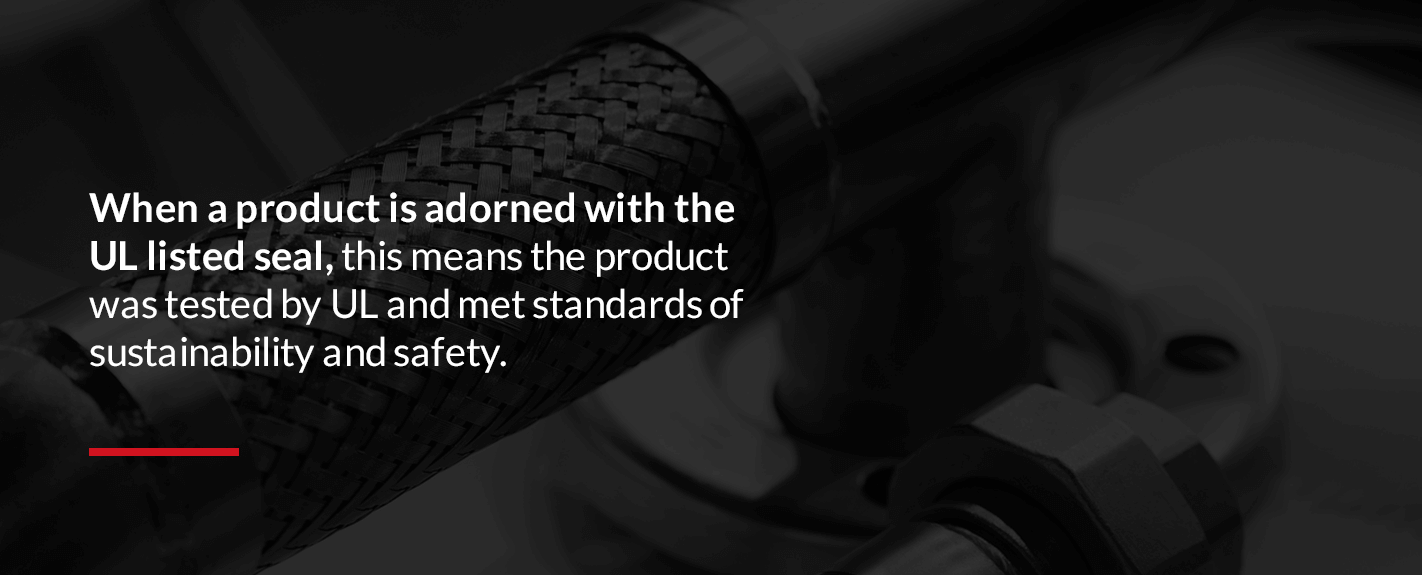
The Difference Between UL Listed vs. UL Certified
In general, there is no difference between the terms “UL Listed” and “UL Certified.” For some UL Marks, the term “certification” is used to communicate that the organization has successfully tested the manufacturer’s sample product against certain standards and specifications.
It’s crucial to note that the term “certification” does not imply UL’s “approval” of the consumable’s use in all potential applications. These two terms are essentially an umbrella under which other UL Marks fall. When a product or service bears these marks, this is a third-party verification indicating compliance with scientific quality, security or safety standards.
What Is the Difference Between UL Listed and UL Recognized Component?
What sets UL Recognized Component Marks apart is that this credential is not applied to end products. A service for UL recognition is less consumer-facing, and thus, focuses more on the machinery and the parts that create other products. UL Recognized Component Marks establish a component’s adherence to UL standards, generally as part of a bigger UL-certified service or good.
UL recognition is seen most commonly in factories in the form of circuit boards or power supplies that power other machinery. When a product is a UL Recognized Component, this ensures the efficiency and safety of the machinery and allows companies to implement more sustainable practices. Since UL Recognized Component certification focuses on parts, UL can ensure that equipment is housed properly, which may require additional precautions for installation to protect the product from liquids or chemicals during the manufacturing process.
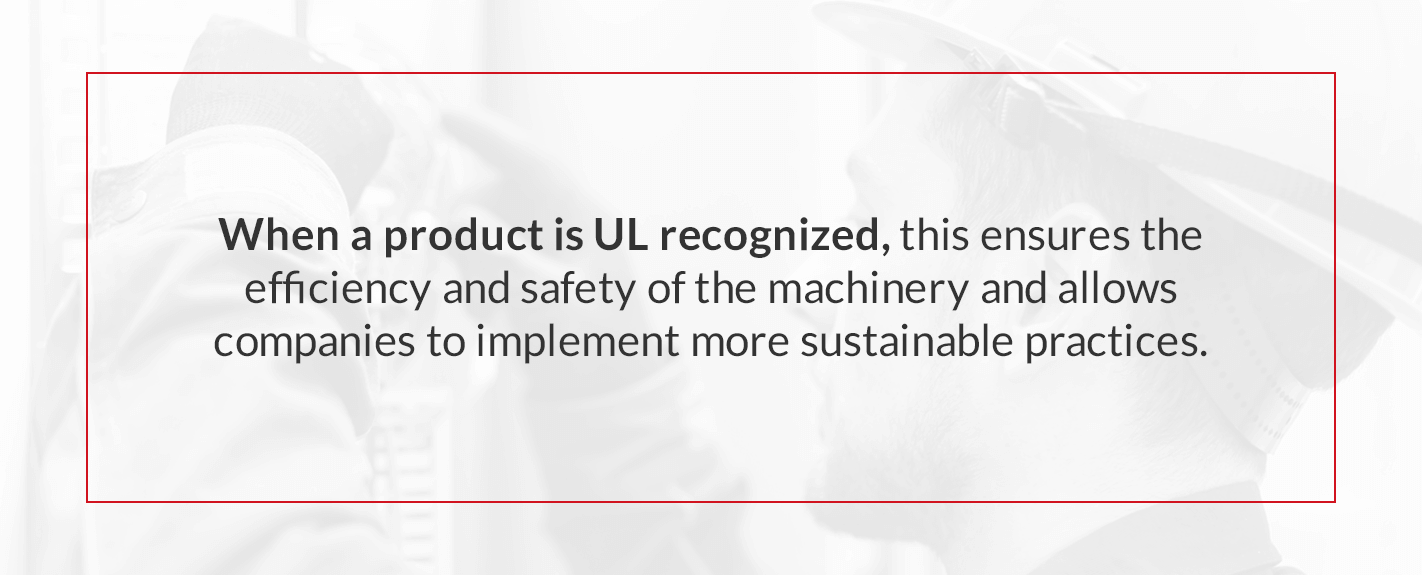
The Difference Between UL Certification vs. CE
You may have seen logos similar to UL in other countries. In the EU, a similar organization is CE, which sets the standards for common electronics. CE refers to Comformité Européenne, which translates into English as “European Conformity.” CE is quite similar to UL. In fact, the main difference between the two organizations is their location — the country in which the product is being manufactured and sold.
Is CE as good as UL? Similar to UL, CE provides companies the advantage of being able to sell their products anywhere in the EU and market the CE logo. As a result, many companies choose to become CE–certified to help expand their marketing capabilities.
There are some differences between CE marks and UL ones. While the UL certification is optional in the U.S., this is not the case for the CE mark in Europe. Instead, the CE mark is legally required for products that will be used in construction. A product that is UL Listed does not automatically qualify for the CE mark. A product must receive a Declaration of Performance certificate and a CE mark before being used in Europe. Similarly, a product that has received the CE mark is not automatically considered UL Listed.
Is UL Certification Required?
UL certification is a thorough process that can be lengthy and costly. Each product must undergo individual testing to ensure its durability and safety and whether it meets the intended design purposes. This can mean testing goods under specific conditions that involve:
- Cold
- Heat
- Longevity
- UV resistance
Additionally, any changes in a product’s design may require retesting or using pre-tested components.
Do You Need UL Certification To Sell In The USA?
Anyone who intends to sell products in a retail store should understand that most retailers won’t carry products that are not safety certified. Though there are no mandatory safety standards that need to be followed for consumer electronics in the U.S., for example, ensuring the safety of a product is essential.
Do You Need UL Certification to Import Products?
When importing products, compliance with UL standards is typically not mandated by law. However, importers are responsible for ensuring a product is safe, and the best way to ensure product safety is by following the standards set by UL.
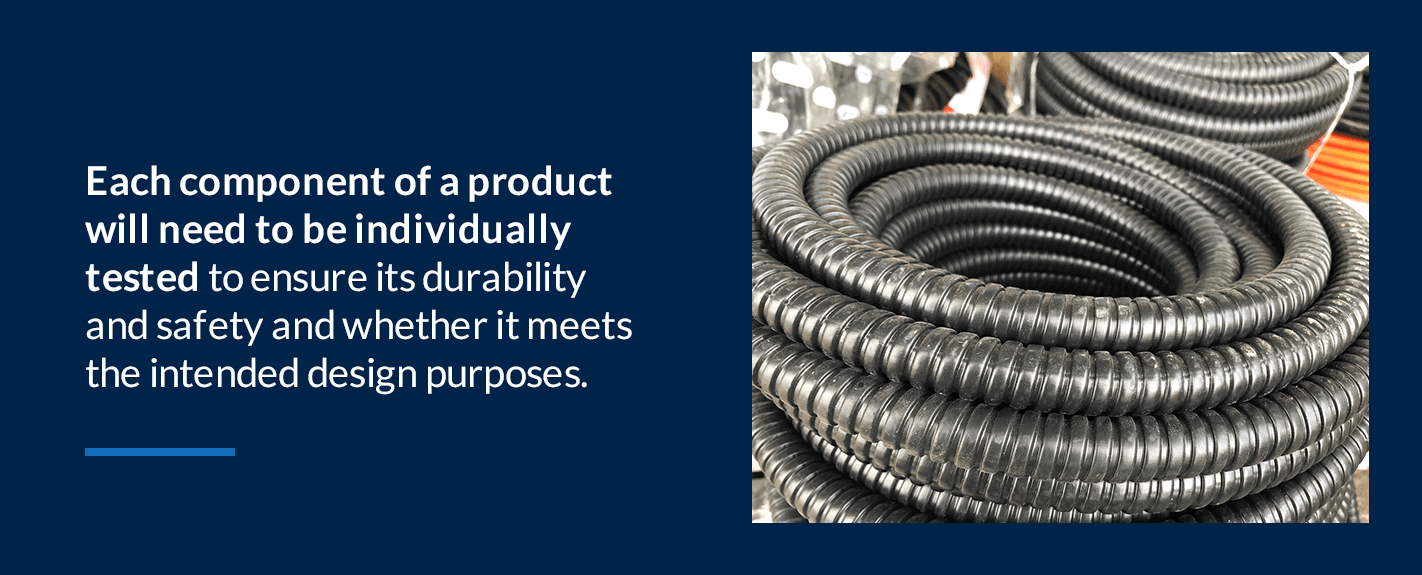
Is UL Certification Important?
Although you can choose alternate testing labs for safety certification, the standards set by UL are the benchmark all other testing labs adhere to. However, UL certification may be more challenging to obtain, as the process is more comprehensive and rigorous. Getting a UL Listing is important, as it offers the following benefits:
- Stricter requirements for certification: UL certification is the world’s top-rated safety certification because the testing process is more comprehensive and rigorous and the requirements are stricter. UL first tests for electrical safety and mechanical safety and then performs more extensive testing for durability, resistance and longevity. Durability testing is typically performed under adverse conditions so consumers know they are getting a safe, high-quality product. UL also applies strict quality control and requires thorough scientific testing to verify compliance with standards.
- Ongoing third-party safety verification: Local field representatives from UL visit manufacturers several times a year to serve the ongoing safety certification, ensuring the UL Mark is applied only to products that meet the UL requirements. Visits are unscheduled and unannounced to verify the manufacturer maintains all the required safety and quality standards.
- Superior track record: Compared to other safety certifications, UL has a superior track record. The organization has a long-standing reputation after more than a century of work. Each time a manufacturer certifies a new product, they benefit from UL’s reputation that accompanies their Marks. UL is the most well-known Nationally Recognized Testing Laboratory, and it is also the only testing lab that is recognized worldwide and operates in various countries.
- Reliability and consistency: UL Certification is also more reliable and consistent in comparison to other safety certifications, as UL is a nonprofit organization dedicated to ensuring consumer safety. Manufacturers do not need membership in a trade organization or professional relationships to get UL certification.
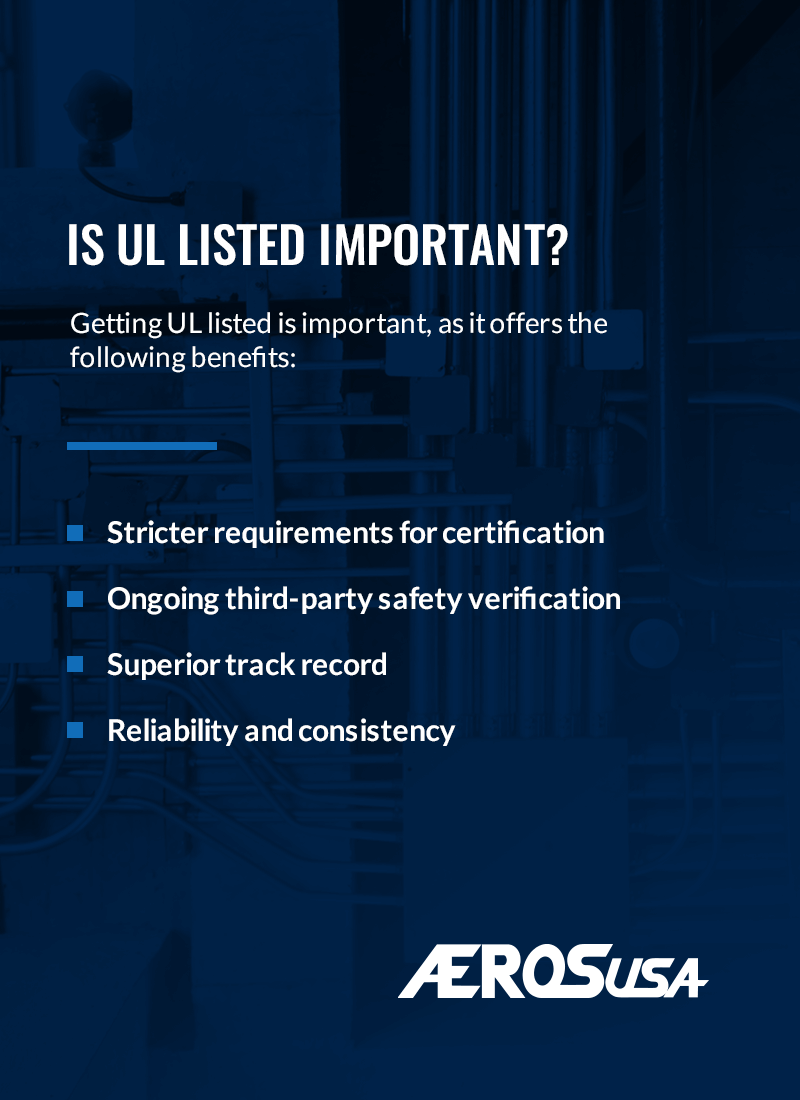
UL Standards List
Standards set by UL encompass the extensive scientific expertise and research in safety conducted by UL. The organization is an accredited developer of standards in both the U.S. and Canada and has developed more than 1,500 standards. To extend its mission for global public safety, UL partners with standards bodies in other countries internationally to create a more sustainable, safe world.
UL is accredited in the U.S. as an audited designator by the American National Standards Institute (ANSI). In Canada, UL is accredited as a nationally recognized Standards Development Organization by the Standards Council of Canada. The Standards Technical Panels of UL serve as the consensus body for the National Standards of Canada and the American National Standards.
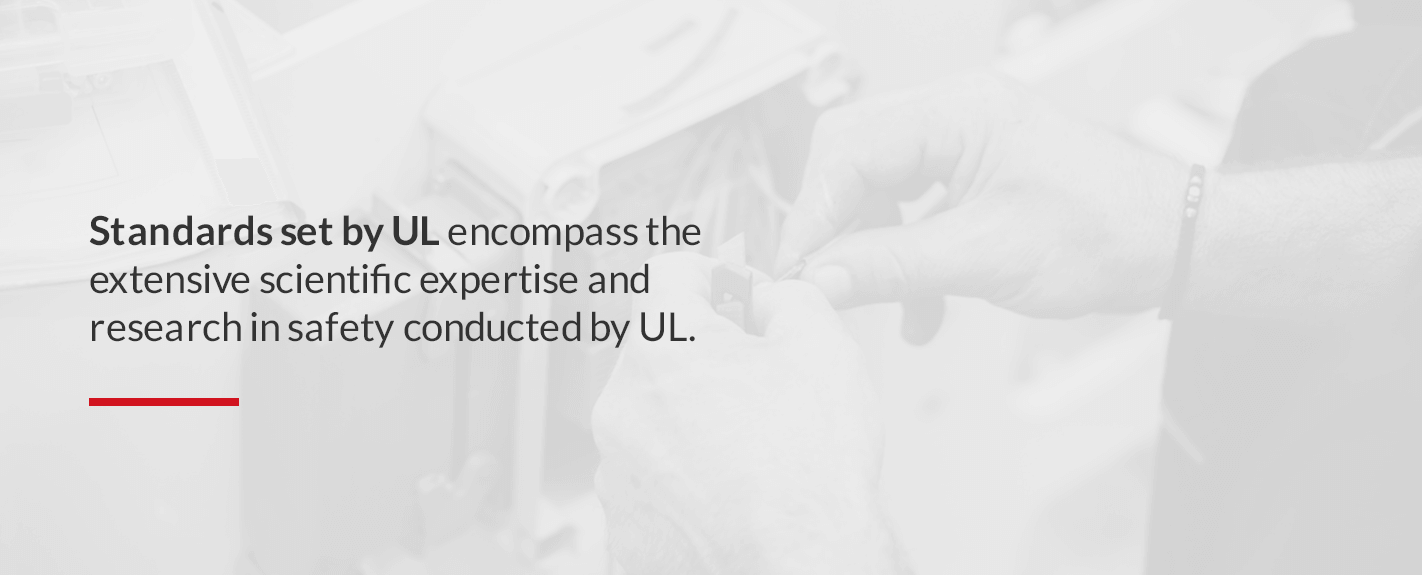
How Are Standards Developed By UL?
UL develops standards under a process that allows for comment and participation from the industry and the affected public. A survey of needs, opinions and known existing standards is taken into consideration during UL’s process. Many in the industry provide UL with input, including manufacturers, government officials, inspection authorities, consumers and industrial and commercial users.
How Are UL Standards Used?
UL standards are used in assessing products by testing components, systems, materials and performance. The standards also evaluate:
- Renewable energies
- Recycling systems
- Food products
- Water products
- Environmentally sustainable products
More than just products are covered by UL standards development. The testing of services and systems is also included. While UL is widely known for its work with safety standards, it also develops a variety of standards for measuring and validating sustainability, performance and environmental health.
How Do You Know Which Standard Applies to Your Product?
To determine which of the standards applies to your product, refer to the Catalog of Standards. This catalog lists UL’s standards, offers brief descriptions of what is covered by each standard and provides ordering and pricing information.
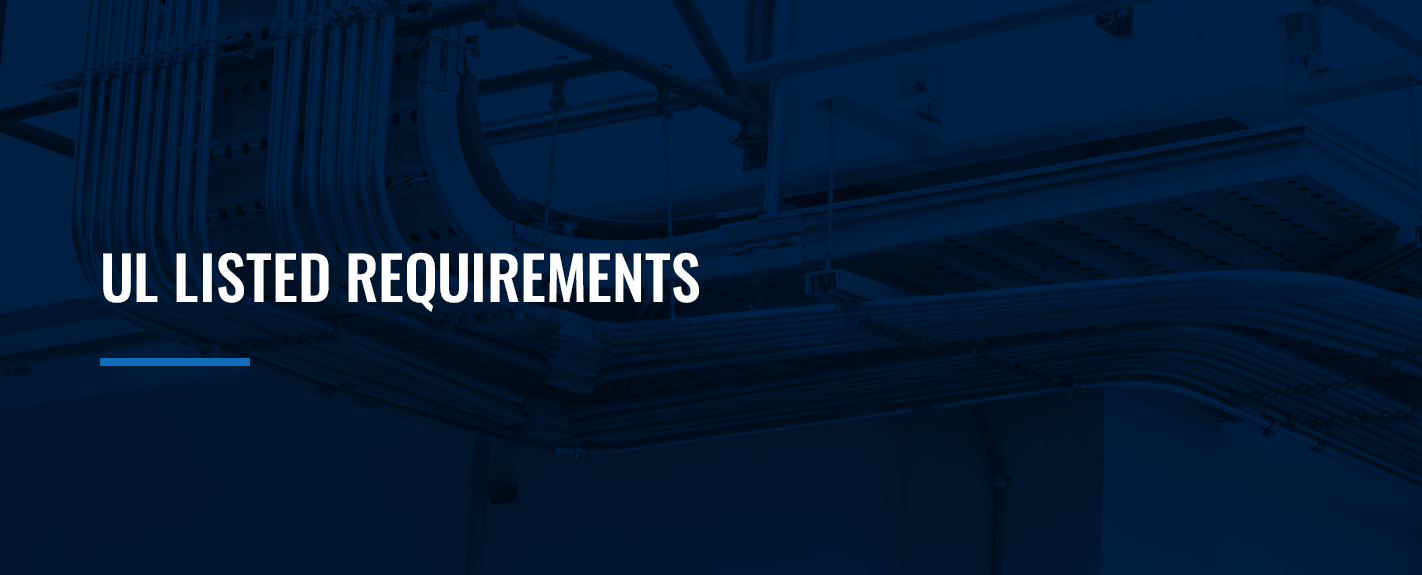
UL Certification Requirements
When a product is UL Certified, this means UL has tested the product’s representative samples and determined it meets defined, specific requirements. These requirements are typically based on UL’s nationally recognized and published Standards for Safety. In some cases, products have also been evaluated by UL for compliance with additional requirements, such as those that cover:
- Functional safety
- Energy efficiency
- Use in security, signaling and plumbing applications
- Use in marine environments and gas-fired equipment
UL Listed Marks are strictly controlled by the organization under its marketing guidelines. Marketing references should clearly specify the accurate UL credentials verified and the applicable geographic scope. For example, marks may include “CA” to denote compliance with Canadian safety standards. Similarly, products tested and certified for functional safety will display those words. Other marks are also available for certain certification achievements from UL’s companies, such as sustainability credentials.
The UL Listing/Certification Mark on the product is the only method provided by UL to identify products manufactured under its Listing/Certification and Follow-up Service.
UL Listing Requirements by State
Environmental and safety codes tend to vary by the municipality or geographic region. This means a UL Listed product can be in compliance within one U.S. city and not be compliant in another. Working closely with the local authority is key in maintaining compliance and making sure you understand the location’s applicable codes.
When you do this during the planning stage, you can specify UL Listed products that satisfy local requirements.
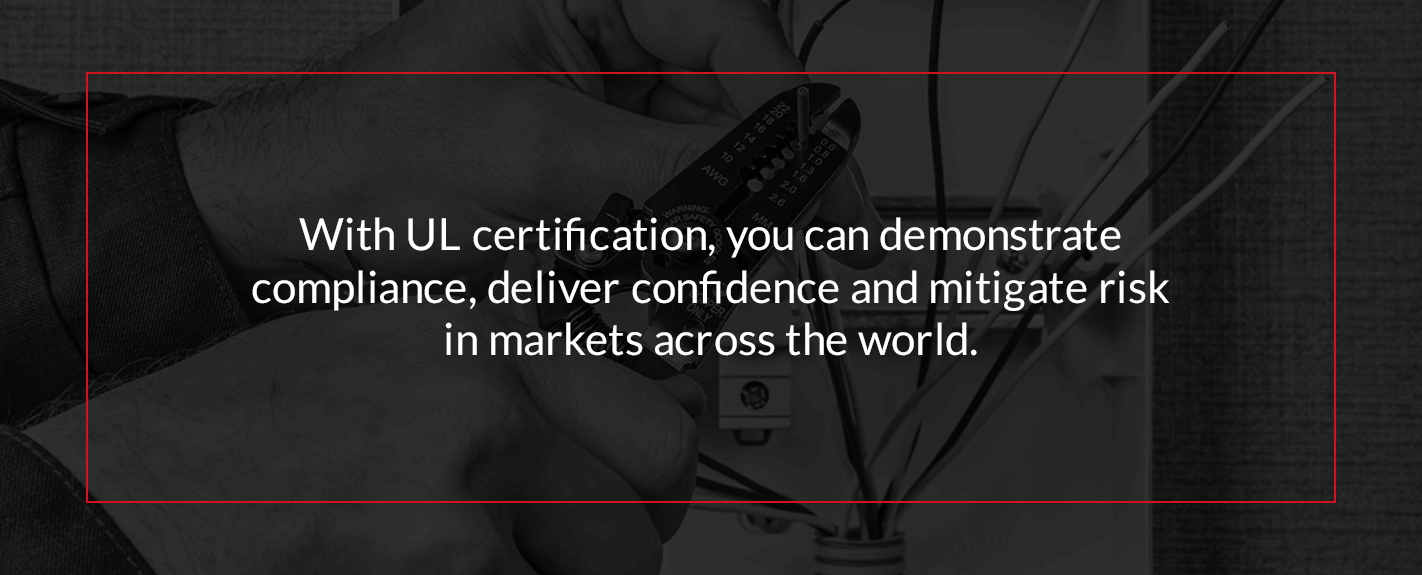
How to Get UL Certified
With UL certification, you can demonstrate compliance, deliver confidence and mitigate risk in markets across the world. UL can also help manufacturers maintain certifications and identify and close gaps in regulation. So how do you get UL Listed? A manufacturer can obtain facility certification, process certification, personnel certification, system certification and product certification:
- Facility certification: UL can evaluate how well an operation adheres to the applicable healthcare safety standards and regulations. UL will review plans, conduct checks for safety issues, assess the performance of components and products and perform on-site evaluations.
- Process certification: UL can also work with you to make sure business processes meet the applicable requirements and standards.
- Personnel certification: UL’s personnel certification can help empower practitioners with the qualifications needed to effectively and safely perform their work.
- System certification: UL offers system certification to evaluate how individual processes and products work together.
- Product certification: A product certification from UL can demonstrate that a product has been tested and meets applicable standards.
Follow the steps below to get UL certified:
- Visit the UL website: First, visit the UL website. Here you will find the links to all the relevant information and forms in regards to submitting a product sample for testing at UL.
- Submit a sample product: Next, you will submit a sample product for UL to test. All handling and shipping costs should be paid by the entity or organization sending the sample product. Make sure to package the sample product in a way that the product won’t be damaged in the shipping process.
- Pay testing fee: When UL receives your sample product, they will begin safety evaluation. Evaluation is based on testing that is designed to ensure the product meets ANSI and Occupational Safety and Health Administration (OSHA) standards. After UL tests your product, the product will either be deemed compliant with standards and requirements or it will be rejected based on a lack of compliance. You will need to pay a fee for the UL’s administration of these tests.
- Receive your UL Certificate of Compliance: After your product is verified, a certificate will be issued by UL. You will then be authorized to place the UL logo on your manufactured product. Audits will be performed intermittently to make sure your product continues to follow the relevant guidelines and remains compliant with the UL standards.
The Cost of UL Certification
A UL certification costs vary based on and not limited to the following:
- The type of product you submit (your product category).
- The number of products you’re certifying.
- Your industry.
- The scope of the evaluation or certification.
The fees involved in certification include:
- Initial product test fee: This fee is based on published standards and product category as submitted in your product information paperwork.
- Follow-up service fee: This fee applies to the Type R and Type L services UL provides. The exact cost is based on the frequency and number of follow-up inspections.
- UL marking fee: The UL marking fee pays for the official UL labels and marks for your products.
- Miscellaneous fees: Other fees may arise during the certification process, including the variation notice fee, customer corrective action fee, sample test fee and new work fee.
UL will send you an estimated cost of your certification once they have reviewed your information.
Once UL receives and reviews your product information to determine the complete scope of the investigation, you will work with UL to determine the time frame for product testing and certification. The time frame of Underwriter Laboratories’ investigation and analysis of your product depends on factors such as:
- When you require the product to be completed.
- The availability of samples.
- The availability of required information.
- The amount of testing.
- Whether a visit to your facility should be scheduled.
Another time frame factor to consider is the time your company needs to design your device to follow the technical and legal safety requirements for the UL Certification tier.
Contact AerosUSA, Inc. for UL Listed Products
At AerosUSA, Inc., we reduce labor costs with faster installation. We also allow for cable protection in environments that require high flexibility, like robotics. Our products are long-lasting and can be used in many environments. The following products are included in our extensive product line:
- UL Listed conduit fittings
- UL Listed conduits
- Accessories
- Cable glands
- Sleeves and braids
- Cable guide chains
- Cable entry systems
- UL Listed conduit connectors
We value providing you with high-quality service and are quick to respond to inquiries and quotes. Contact us at AerosUSA, Inc. today or browse our UL listed products.

